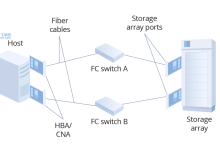操作系统镜像简介
操作系统镜像是一个包含完整操作系统安装程序的文件或光盘映像,通常包含操作系统的所有组件和应用程序。镜像文件通常通过下载或挂载光盘使用。
操作系统镜像的作用
操作系统镜像的主要作用是使用户快速且方便地进行操作系统的安装、部署和升级。它们还可以在虚拟化环境中提供一个标准的安装程序。对于企业和大型组织来说,操作系统镜像可以加快新电脑系统和服务器的部署速度。
操作系统镜像还可以作为虚拟机的镜像文件使用。运行在虚拟机上的操作系统可以创建一个文件系统并将其保存在虚拟磁盘文件中。虚拟机可以重复使用这些镜像文件。
常见的操作系统镜像类型
目前,常见的操作系统镜像类型包括基于Unix的操作系统如Linux、FreeBSD和Solaris等以及基于Microsoft Windows操作系统。这些镜像文件可以通过官方网站、第三方软件源和镜像站点等途径获取。不同类型的操作系统镜像文件可能具有不同的文件扩展名,例如:
.iso – 通常用于光盘镜像
.img – 通常用于软盘或USB镜像
.vmdk – 通常用于虚拟化环境
.qcow2 – 通常用于QEMU虚拟化环境
如何使用操作系统镜像
通过操作系统镜像进行安装通常需要以下步骤:
下载操作系统镜像文件。
将镜像文件写入CD或USB闪存驱动器。
将CD或USB驱动器插入要安装操作系统的计算机中。
按照安装程序中的步骤进行操作系统的安装。
对于虚拟机环境,操作系统镜像可以通过以下步骤来使用:
下载所需的操作系统镜像文件。
在虚拟化管理器中创建一个新的虚拟机,并分配硬件配置,如内存大小、磁盘容量和处理器数量等。
将操作系统镜像文件加载到虚拟光盘驱动器中。
启动虚拟机并按照安装程序中的步骤安装操作系统。
The Introduction of Operating System Image
An operating system image is a file or disc image that contains a complete operating system installation program, usually including all the components and applications of the operating system. Image files are typically used through downloading or mounting the disc.
The Function of Operating System Image
The main function of operating system images are to enable users to install, deploy and upgrade operating systems quickly and conveniently. They also provide a standard installation program in virtualized environments. For enterprises and large organizations, operating system images can speed up the deployment of new computer systems and servers.
Operating system images can also be used as virtual machine image files. The operating systems running on virtual machines can create a file system and save it in virtual disk files. Virtual machines can reuse these image files repeatedly.
The Common Types of Operating System Image
Currently, common types of operating system images include Unix-based operating systems such as Linux, FreeBSD, and Solaris, as well as Microsoft Windows operating systems. These image files can be obtained through official websites, third-party software sources, and mirror sites. Different types of operating system image files may have different file extensions, such as:
.iso – usually used for disc images
.img – usually used for floppy disk or USB images
.vmdk – usually used for virtualized environment
.qcow2 – usually used for QEMU virtualization environment
How to Use Operating System Image
The following steps are usually required to install an operating system using an operating system image:
Download the operating system image file.
Write the image file to a CD or USB flash drive.
Insert the CD or USB drive into the computer on which the operating system is to be installed.
Follow the instructions in the installation program to install the operating system.
For virtual machine environments, operating system images can be used with the following steps:
Download the required operating system image file.
Create a new virtual machine in the virtualization manager and allocate hardware configurations such as memory size, disk size, and number of processors.
Load the operating system image file into the virtual optical drive.
Boot up the virtual machine and follow the instructions in the installation program to install the operating system.
90 12 76 39 58

 国外主机测评 - 国外VPS,国外服务器,国外云服务器,测评及优惠码
国外主机测评 - 国外VPS,国外服务器,国外云服务器,测评及优惠码













